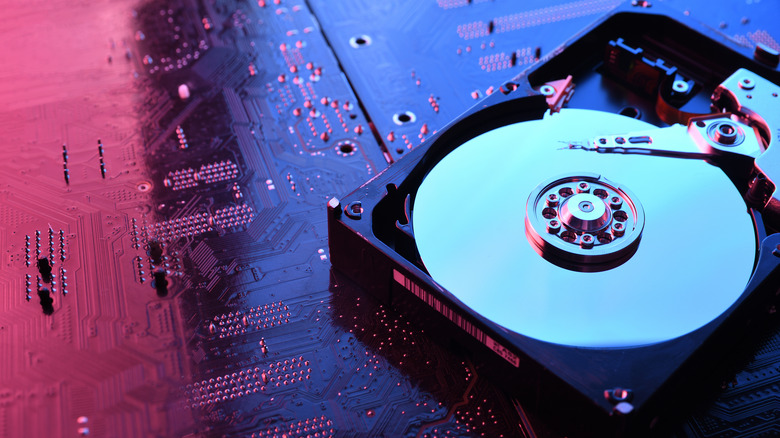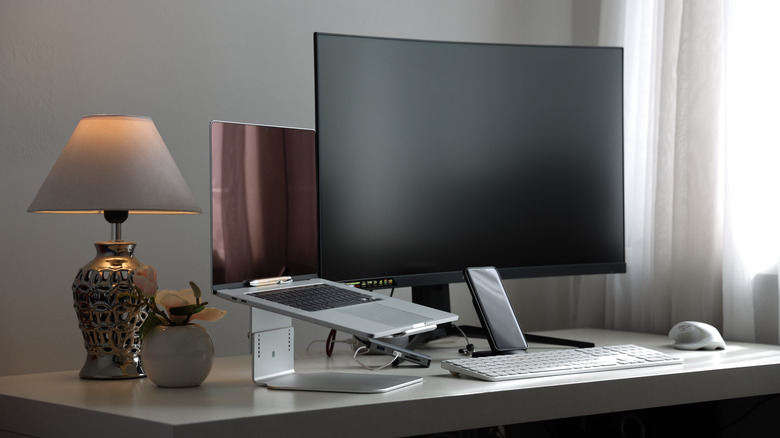How To Partition Your PC's Storage Drive (And Why You Might Want To)
At the heart of every PC is a storage drive, which stores the Microsoft Windows operating system and also contains space for your personal data, documents, photos, and applications. Regardless of whether your PC uses a hard drive (HDD) or solid-state drive (SSD), you could find that partitioning provides certain benefits, including security, versatility, and (in the case of HDDs) performance.
When a storage drive is "partitioned," the available storage space is divided into separate blocks, or "partitions," which operate independently. Each partition is treated by your PC as a separate drive, which can be allocated to a specific purpose. You can even format them differently.
In this article, we'll provide a brief explanation of some of the potential benefits of partitioning your storage drive with simple instructions and guidance. As always, before you change anything about how or where data is stored on your PC, back it up first.
Reasons to partition your PC's storage drive
The two main reasons to partition your PC's storage drive are data security and flexibility. HDD users might also see a performance benefit from partitioning.
Data security
With an unpartitioned drive, if something goes wrong, all of the data on the drive could be at risk. By partitioning your storage drive, you can help protect your data in the case of accidental deletion or data corruption. So if the worst happens and you need to reformat one of the partitions on your drive, only the data stored on the affected partition will be lost.
Flexibility
Data on your PC's storage drive is stored in the default Windows NTFS file system. If you want to share data across operating systems, i.e., with Linux, or Mac OS, you're going to have issues. By creating a dedicated partition of your storage drive in a file system that other operating systems can understand, you'll be able to share data between systems easily. You can even install another operating system on a partition, allowing you to "dual boot" your PC. You can also use partitioning to sandbox data for a virtual machine.
Performance (HDDs only)
Because HDDs store information on spinning circular disks platters, which is read by mechanical heads, the speed at which data can be accessed depends partly on how quickly the disks and heads can move to find it. In general, therefore, you can expect a modest performance improvement by partitioning your HDD so that the Windows operating system is stored separately from your photos or documents.
How to partition your storage drive (Windows 10/11)
Note that there are minor differences between the terms used in Microsoft Windows 10 and Windows 11 in some cases. The following steps assume you're using Windows 10, but the steps for partitioning a drive in Windows 11 are extremely similar.
-
Open Windows File Explorer and find This PC. Right-click on it, and select Manage in the dialog box.
-
On the left side of the pane under Storage, select Disk Management, and from there, select the Volume (drive) that you want to partition. If your PC only has one storage drive, it should be called (C:).
-
Click on Action in the top-level menu and select All tasks. Then click on Shrink Volume. And don't worry — you're not deleting any data.
-
Enter the amount of disk space that you want to shrink the volume by, in megabytes (MB). Remember that 1,000MB = 1GB. Click Shrink to confirm.
-
You should see a new volume appear beneath (C:). Right-click on it and select New Simple Volume. This will create a new partition.
Advertisement -
In the New Simple Volume Partition Wizard, choose the file system that you want to use for the new partition. The default is NTFS, but you should select exFAT if you want to use your new partition to share data with other operating systems.
Reasons NOT to partition your storage drive
Finally, we've explained some of the potential benefits of partitioning your PC's storage drive, but that doesn't mean that everyone should do it. Here are some things to consider if you're thinking of partitioning your drive.
-
Space: When you partition a drive, you're taking one drive with a lot of space on it, and dividing it up into, essentially, multiple smaller drives. You may find that over time, you run out of space on individual partitions, which can create headaches down the road.
-
Limited data security: Partitioning adds some extra security to your data, but it's no substitute for a proper backup. Remember that a single drive is still a single point of failure, and HDDs are especially vulnerable to mechanical issues over time.
-
Complexity/hassle: Unless you really need the benefits described above, partitioning your PC's storage drive creates an additional layer of complexity for file management and general operation, and the added risk of accidentally erasing or reformatting data. If you don't consider yourself a power user, you may find that the hassle of managing multiple drive partitions outweighs the benefits.
Advertisement



